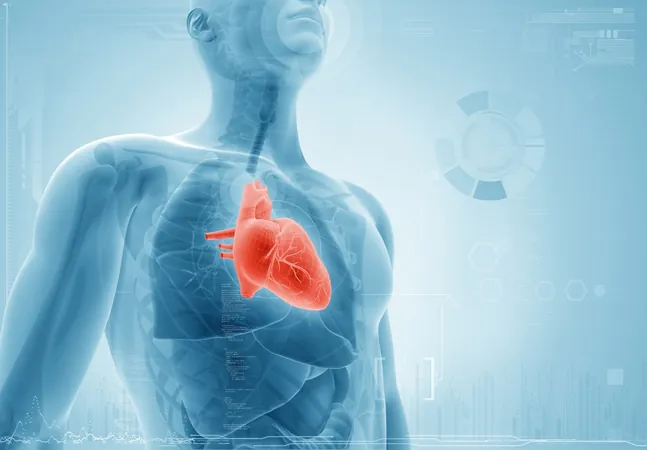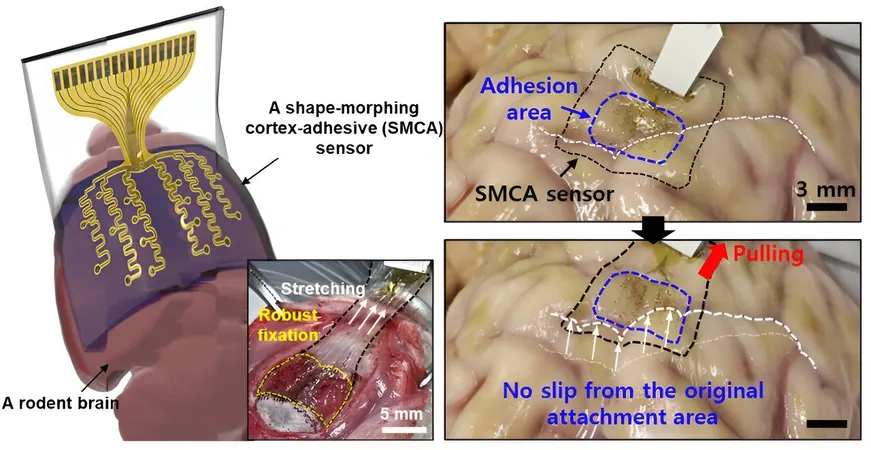
Revolutionary Breakthrough in Heart Disease Detection: New Imaging Technique Unveils Hidden Collagen
2024-09-30
Understanding Collagen
Collagen, the most abundant protein in the human body, plays a vital role in maintaining the health of various tissues, including our bones, skin, tendons, ligaments, and even the heart. Comprising about one-third of our total body protein, collagen is often referred to as the "glue" that holds our bodily systems together.
Types of Collagen
There are 28 types of collagen; however, they can be broadly categorized into five main types: - **Type I:** The most prevalent form, found in skin, bones, tendons, and ligaments. - **Type II:** Present in cartilage, providing critical support to joints. - **Type III:** Found in muscles, arteries, and internal organs. - **Type IV:** Located within the layers of skin. - **Type V:** Associated with hair, eyes, and skin.
Impact of Aging on Collagen
As we age, collagen production declines, and any existing collagen may become altered or dysfunctional. This deterioration is particularly concerning in cases of serious health conditions like cardiac disease, high blood pressure, or heart inflammation, which can cause collagen to become stiff and fibrotic, affecting the heart's overall function. Detecting these abnormal collagen deposits is notoriously difficult and is typically achieved through cardiac MRI or ultrasound scans.
A Breakthrough Imaging Technique
However, Monash University has unveiled an innovative imaging technique that promises to enhance our ability to detect abnormalities in collagen related to heart disease, potentially leading to significantly earlier diagnoses.
The Role of T-Peptide
A dedicated team of researchers from the Monash School of Translational Medicine, led by Dr. Karen Alt, created a new radiotracer—a chemical probe for positron emission tomography (PET) imaging—composed of a unique short chain of amino acids known as a T-peptide. Upon injection, this T-peptide targets areas in the heart where collagen has accumulated, indicating fibrosis—an early warning sign of heart complications.
Research Background and Publication
The research project received backing from a Heart Foundation Vanguard Grant and featured collaboration with Professor Paul Donnelly from Bio 21 at The University of Melbourne, who was instrumental in synthesizing the tracer. Their findings, published in the journal Radiology: Cardiothoracic Imaging, demonstrate that this method is significantly more sensitive in detecting heart fibrosis compared to conventional methods.
Expert Insights
Lead researcher Dr. Be'eri Niego emphasized the challenges of diagnosing diffuse cardiac fibrosis, stating, "T-Peptide-based imaging allows us to directly visualize collagen deposits across the heart muscle—something current imaging struggles to achieve."
Future Prospects and Applications
The team hopes that this novel imaging technique will undergo human trials and prove effective not just for heart conditions but also for other fibrotic diseases affecting different organs. Dr. Alt noted, "T-peptide imaging is exceptionally sensitive enough to detect early disease stages, where timely intervention can lead to effective treatment and potentially reverse the condition."
Reversibility of Cardiac Fibrosis
Importantly, certain types of diffuse cardiac fibrosis can be reversible, illustrating the critical need for sensitive imaging to facilitate early intervention strategies.
Challenges in Developing PET Probes
Developing PET probes poses challenges comparable to crafting new pharmaceuticals. While over 100 radiopharmaceuticals have been developed worldwide, only a select few have received approval for clinical PET imaging. One of the most significant hurdles remains the development of a probe that is specific to a particular organ or disease stage.
Conclusion
This cutting-edge research holds promising implications for improving heart disease diagnostics, potentially saving lives by enabling timely and effective interventions. As we look ahead, the medical community eagerly anticipates the results of human trials and the prospect of transforming how we detect and treat heart-related conditions.



 Brasil (PT)
Brasil (PT)
 Canada (EN)
Canada (EN)
 Chile (ES)
Chile (ES)
 España (ES)
España (ES)
 France (FR)
France (FR)
 Hong Kong (EN)
Hong Kong (EN)
 Italia (IT)
Italia (IT)
 日本 (JA)
日本 (JA)
 Magyarország (HU)
Magyarország (HU)
 Norge (NO)
Norge (NO)
 Polska (PL)
Polska (PL)
 Schweiz (DE)
Schweiz (DE)
 Singapore (EN)
Singapore (EN)
 Sverige (SV)
Sverige (SV)
 Suomi (FI)
Suomi (FI)
 Türkiye (TR)
Türkiye (TR)